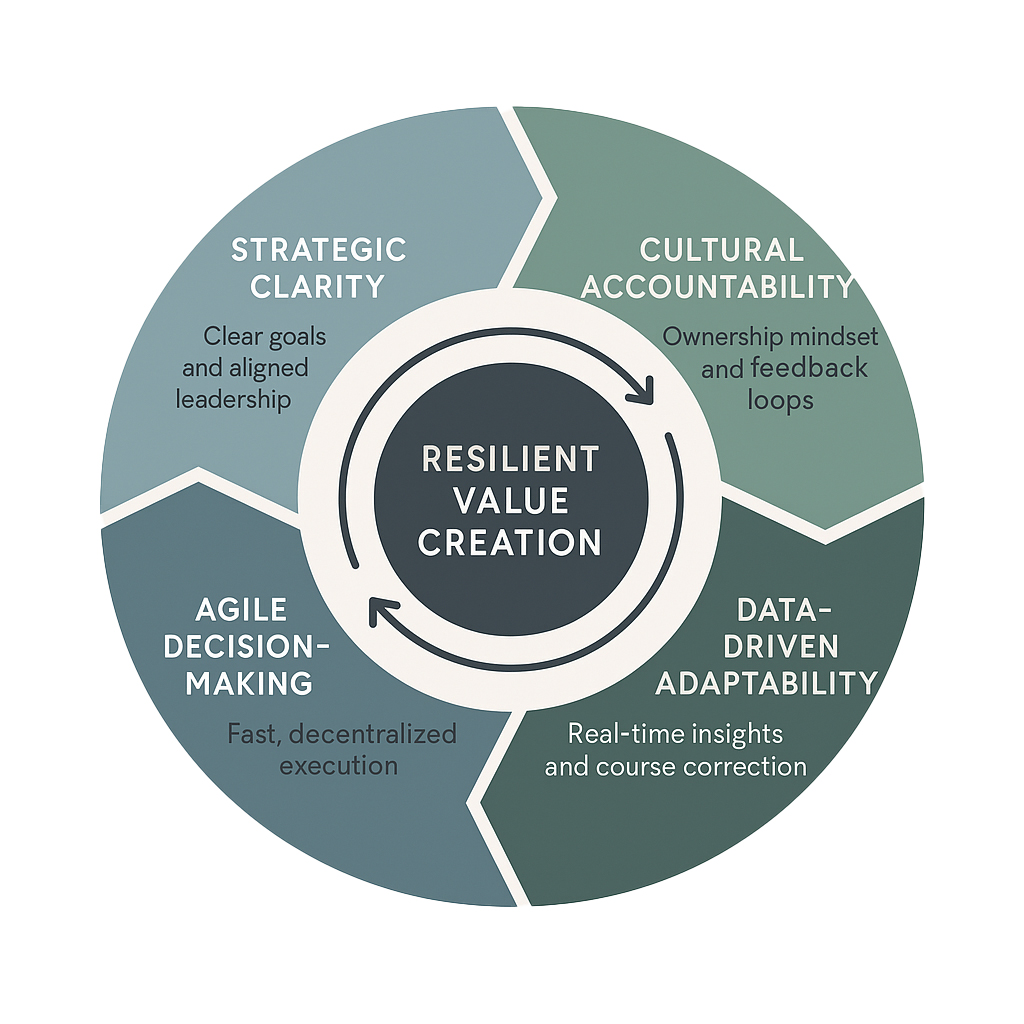
With a record number of portcos being held and sluggish deal markets, private equity is sharpening its focus on operational resilience. Current macro-economic and geopolitical turbulence has placed a premium on the ability to adapt, absorb shocks, and sustain performance through uncertainty. This is becoming a defining trait of outperforming portfolio companies.
This shift is not new, but it is accelerating. The pandemic, supply chain disruptions, inflationary pressures, and geopolitical instability have exposed the fragility of even the most well-capitalised businesses. As a result, operating partners and deal teams are increasingly embedding resilience into the DNA of their value creation plans from day one.
But what does operational resilience really mean in a PE context?
It’s more than just robust IT systems or contingency planning. True resilience is about organisational agility—the ability to make fast, high-quality decisions, reallocate resources dynamically, and maintain alignment across leadership teams under pressure. It’s about building companies that can not only weather storms but emerge stronger from them.
Humatica has seen that the most resilient portfolio companies share a few common traits. First, they have clarity of purpose and a well-communicated strategy that cascades through the organisation. That is, the context for good decision-making is well understood at all levels. Second, they empower decision-making at the right levels, avoiding bottlenecks at the top. Third, they foster a culture of accountability and continuous improvement, supported by transparent metrics and feedback loops with good governance rhythms.
These capabilities don’t happen by accident. They require deliberate design and ongoing reinforcement—especially during periods of rapid growth or transformation. That’s why leading PE firms are investing earlier and more systematically in organisational effectiveness. They’re using data-driven diagnostics to assess leadership alignment, decision-making speed, and cultural fitness to master the challenges. And they’re acting on the insights to build more resilient, high-performing teams.
Interestingly, we’re also seeing a convergence between the roles of operating partners and talent partners. As the human dimension of value creation becomes more central, collaboration between these functions is critical. Whether it’s aligning leadership teams post-close, accelerating integration, or navigating a turnaround, the ability to mobilise people effectively is often the difference between success and underperformance.
For CEOs and management teams, the focus on resilience can be both a challenge and an opportunity. It requires openness to change, a willingness to confront uncomfortable truths, and a commitment to building capabilities that may not yield immediate returns—but will pay dividends in the long run.
Private equity has always been about driving transformation. What’s changing is the toolkit. Operational resilience has become a core component of sustainable value creation. And as the bar continues to rise, firms that invest in building resilient organisations will be best positioned to deliver superior returns, regardless of market conditions.
Humatica, is proud to support many of the most renown investors and their entrepreneurial management teams on this journey, helping them to build-in the organisational muscle needed to thrive in an increasingly complex world.

In today’s private equity landscape, the classic levers of value creation are no longer enough. As markets evolve and competition intensifies, governance is emerging…
Read more
Measuring organizational performance is difficult, especially in a way that is both systematic and genuinely useful for decision-making. In a recent Alpha Talks conversation, Ueli…
Read more
Unpacking the root causes behind underperformance and how to resolve them It’s a familiar scene: Over dinner, a client lamenting inconsistent results across their portfolio…
Read moreReceive our news and valuable perspectives on organizational effectiveness each month.